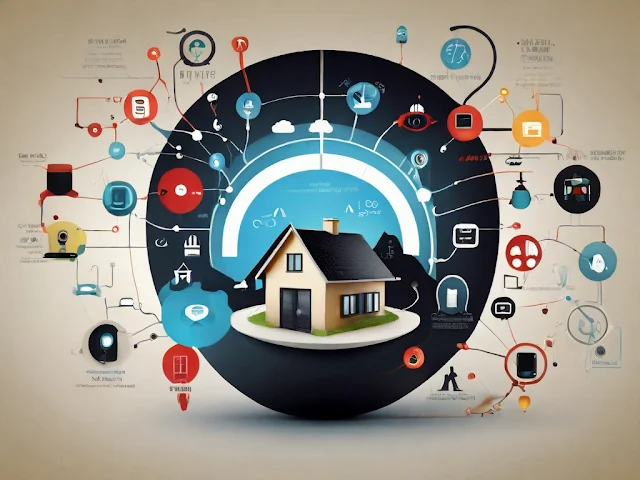Smart Living, ushered in by the Internet of Things (IoT), is revolutionizing the way we interact with the world around us. In this era of connectivity and innovation, our daily lives are becoming more efficient, convenient, and intertwined with technology. Let's delve into the intricacies of Smart Living and explore how embracing IoT can transform our lives.
The Evolution of Smart Living
The journey towards Smart Living traces back to the evolution of technology. From the invention of the internet to the development of smart devices, every step has paved the way for a connected and automated lifestyle. Today, Smart Living goes beyond mere gadgets; it encompasses a holistic approach to enhance the quality of life.
Key Components of Smart Living
At the core of Smart Living are its key components, including smart homes, wearable technology, and connected cities. Smart homes boast intelligent appliances that communicate with each other, creating an ecosystem that responds to the needs of its inhabitants. Wearable technology, on the other hand, brings health and lifestyle monitoring to our fingertips. Meanwhile, connected cities leverage IoT to optimize infrastructure, transportation, and public services.
Benefits of Embracing IoT in Daily Life
The advantages of embracing IoT in daily life are multifaceted. The seamless integration of devices not only enhances efficiency and convenience but also contributes to energy savings and environmental sustainability. Smart Living promotes improved healthcare and overall well-being by providing personalized insights and timely interventions.
Challenges and Concerns
However, the path to Smart Living is not without challenges. Privacy and security issues loom large as more devices collect and share personal data. The integration of diverse technologies poses compatibility challenges, and concerns about the environmental impact of electronic waste are gaining prominence.
IoT Innovations Transforming Industries
Industries across the spectrum are experiencing transformative changes due to IoT. In healthcare, smart devices facilitate remote monitoring and personalized treatment plans. Transportation is becoming more efficient and safer with the integration of IoT technologies, while agriculture benefits from precision farming and real-time data analytics. Retail, too, is evolving with smart inventory management and personalized shopping experiences.
Smart Living in Action: Real-Life Examples
Real-life examples showcase the tangible benefits of Smart Living. From smart homes that learn user preferences to cities optimizing traffic flow using IoT, these case studies highlight the positive impact on daily life. User experiences and testimonials provide valuable insights into the practical applications of Smart Living technologies.
Future Trends in Smart Living
Looking ahead, the future of Smart Living holds exciting possibilities. Emerging technologies, such as edge computing and 6G connectivity, promise even faster and more reliable communication. Anticipated advancements include further integration of augmented reality and virtual reality into the Smart Living ecosystem, enhancing user experiences.
Navigating the Smart Living Ecosystem
For those considering embracing Smart Living, navigating the ecosystem can be overwhelming. This section provides practical tips for adopting smart technologies, including selecting compatible devices and choosing user-friendly platforms.
Security Measures in Smart Living
As the number of IoT devices increases, so does the need for robust security measures. Best practices for securing devices and raising cybersecurity awareness among users are crucial for a safe and reliable Smart Living experience.
The Role of AI in Smart Living
Artificial Intelligence plays a pivotal role in Smart Living by enhancing the capabilities of IoT devices. From predicting user preferences to optimizing energy consumption, the integration of AI adds a layer of intelligence to the connected ecosystem.
Social Impacts of Smart Living
Beyond the technological aspects, Smart Living brings about social changes. Lifestyle choices and community dynamics are influenced by the convenience and interconnectedness offered by IoT. The economic landscape also sees shifts as new industries and job opportunities emerge.
Sustainability and Eco-Friendly Practices
Smart Living isn't just about convenience; it's also about sustainability. The article explores how IoT contributes to environmental sustainability and highlights eco-friendly features in smart technologies, encouraging users to make choices that benefit the planet.
Conclusion
In conclusion, Smart Living through the Internet of Things presents a paradigm shift in our daily lives. While reaping the benefits of efficiency and convenience, it's crucial to address the challenges responsibly. Embracing Smart Living requires a balance between innovation and ethical considerations, ensuring a positive impact on individuals and society.

